The first thing a person might say when you tell them you have the connective tissue disorder known as Ehlers-Danlos syndrome is, “What’s that?” So few people beyond those who have EDS themselves (or know someone who does) have heard of or understand its many symptoms. And since many of these symptoms are not immediately visible, that can make it even more difficult for others to understand how the disorder affects you — and, this lack of awareness and understanding can even make it harder for people who actually have EDS to get a diagnosis and find their “community” of fellow EDS warriors.
• What is Ehlers-Danlos Syndrome?
• What Are Common Ehlers-Danlos Syndrome Symptoms?
The following memes can hopefully help with both of these challenges. Below, you’ll find 10 common symptoms of EDS, described with memes. Perhaps they’ll help your loved ones understand your condition, and show you that if you deal with these symptoms, there are others out there experiencing the same thing.
1. Joint Hypermobility
One of the most common symptoms of EDS is joint hypermobility. Joints are loose and easily dislocate, hyperextend or sublux. You may be able to pull your joints and limbs into positions others can’t (though performing these “party tricks” is not advised as it can injure you).
“It’s like living in a game of Jumanji, or Russian Roulette – every time your body lulls you into a false sense of security, you sneeze and ‘oh balls, my ribs and jaw have just popped out,’” said Mighty contributor L. Comps.
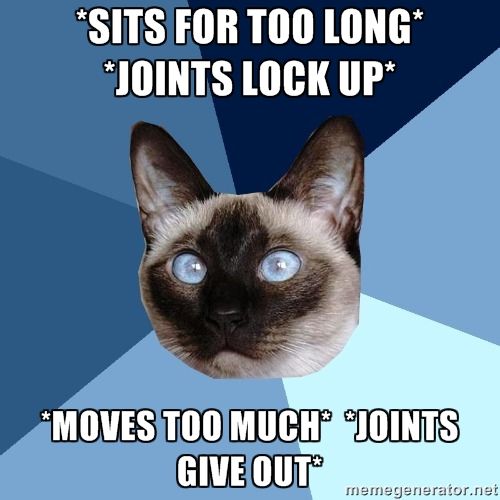
2. Chronic Pain
Widespread musculoskeletal pain, as well as the pain of joint dislocations, is another EDS symptom most with the condition experience.
As Mighty contributor Michelle Hardy explained:
I am aware of a warmth and throbbing in almost all of my joints, a pain that feels like it’s spreading across every fiber of my tissue and muscles, because it is… The joints get more aggravated, the bones knock together and get bruised, tiny fractures start to appear, you name it. And the nerves nearby aren’t really fans of all that. The pain is always there, at various strengths, throughout my entire body.

3. Easy Bruising
Because EDS is a connective tissue disorder, skin tends to be fragile and easily damaged. That means many people with EDS get bruises easily, even if they didn’t bump or hit anything very hard.
One Mighty reader said as a child, they experienced “Constant tiredness, ‘growing pains,’ bruising and splitting the skin on my knees all the time, only wanting to wear ‘comfy’ clothes (the softest materials I could find) and being born with severe bilateral hip dysplasia.”
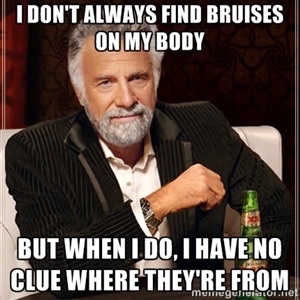
4. Dysautonomia
Dysautonomia is just one of the many co-morbid conditions some people with EDS experience. This umbrella term describes dysfunction in the autonomic system, which affects heart rate, blood pressure, digestion and temperature control. Postural orthostatic tachycardia syndrome (POTS) is a form of dysautonomia in which the heart rate is abnormally fast and is particularly common among those with EDS.
“My heart likes to go to the races, with little to no warning for me. If the chest pain is too bad I have to go to the hospital, in case it’s not my dysautonomia but instead pain in my aorta due to Ehlers-Danlos syndrome,” said Mighty contributor Elyse Sutherland.
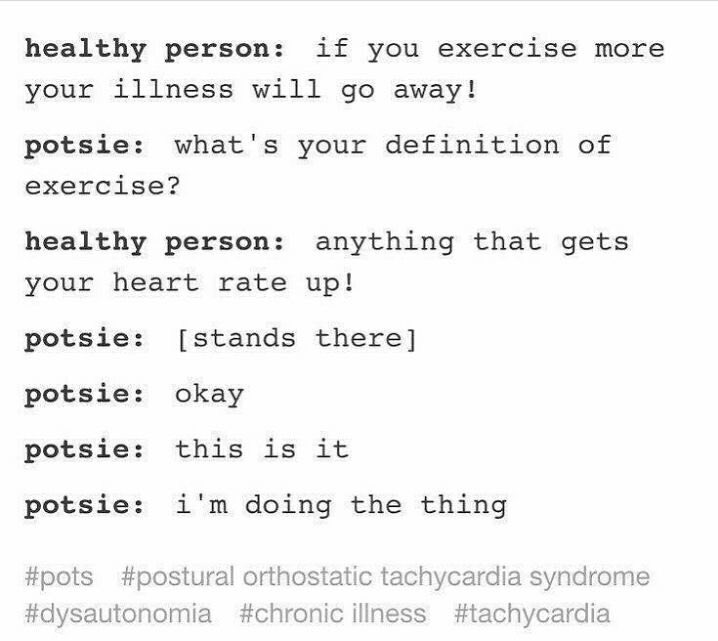
5. Fatigue
Chronic fatigue often overlaps with EDS, meaning you may feel utterly exhausted after physical activity and need more sleep than the average person (though you’re always tired no matter how much you get).
“Ehlers-Danlos syndrome is like having your body made of wet noodles, and your mind and body are so tired from just trying to hold it together until maybe, just maybe, you can get to bed and sleep,” said Mighty contributor Charlie Tarantola.

6. Poor Proprioception
“Proprioception” is the body’s ability to understand its own position and react to stimulation around it. Those with poor proprioception are often called “clumsy” and may find that they tend to trip, walk into objects or drop things.
“I’ve always managed to bump into everything, walk into door frames, slam my hands into counters, or fall into chairs,” said one Mighty reader.
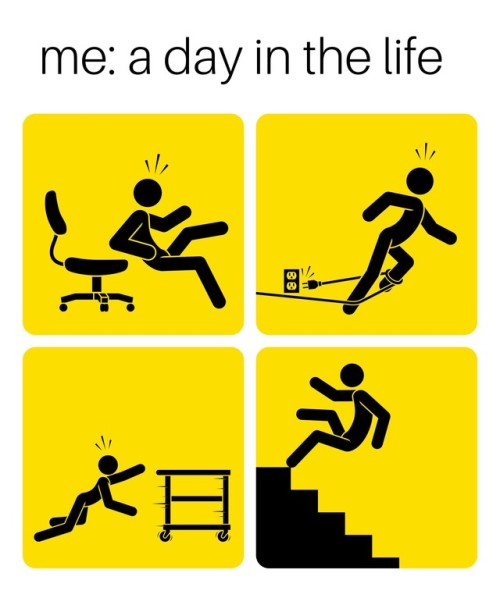
7. Painsomnia
People with EDS often report that sleeping is difficult, due to chronic pain and joint dislocations that can happen when rolling or changing positions in bed. Those with POTS may also find it difficult to regulate their temperature during the night. Getting to sleep may require a complex balance of pillows, blankets and pain relief methods.
“Once I’ve decided on my [sleeping] environment it’s time to actually get into bed. My shoulders sublux if I sleep on my side, but if I sleep flat on my back the natural curve of my spine collapses and I end up with numbness, severe pain or temporary paralysis…Fun right?” Jo Southall wrote on The Mighty.

8. Scoliosis
Spine and back issues are sometimes found in people with EDS since faulty connective tissue can result in spine deformities. Specifically, kyphoscoliotic EDS (kEDS) is characterized by kyphosis, an abnormally rounded upper back, and scoliosis, a sideways curve of the spine.
“I was in 6th grade and kept pulling muscles. No one realized it was scoliosis until I took a kick to the back in karate and landed flat on my rear. Ended up needing to be fused from T3-L4, and then further down to S1 five years later. I was in so much pain I would sob. I was diagnosed with EDS eight years after the initial fusion, after nine surgeries (five on my knee, two on my back, my appendix, and tonsils),” Saylor A. told The Mighty.

9. Soft, Fragile Skin
Soft, velvety skin that stretches and tears easily is a hallmark of EDS.
One Mighty reader said “velvety soft skin that is surprisingly fragile” is a symptom she was surprised by, and another reader agreed, explaining, “Scratching can either tear skin or leave huge friction burns that in turn take forever to heal and almost always leave a scar.”
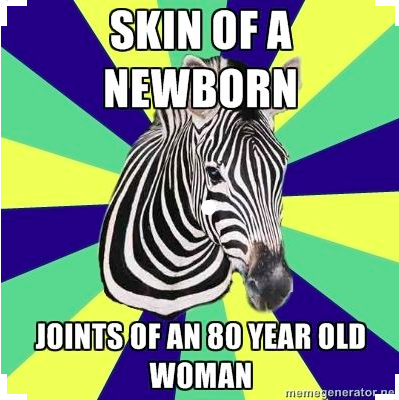
10. Gastrointestinal Issues
The digestive tract can be affected by EDS as abnormalities in connective tissue can lead to dysmotility, reflux, bloating and constipation, among other issues. Needless to say, these symptoms can be painful and affect weight and diet.
“Gastrointestinal issues, like bloating, diarrhea, constipation, difficulty absorbing nutrients, nausea, acid reflux, etc. People are always surprised by these symptoms (as I was!) but EDS can affect your organs, bladder and bowel movements as well. Some people with EDS need a feeding tube and have trouble gaining weight,” one Mighty reader told us.


